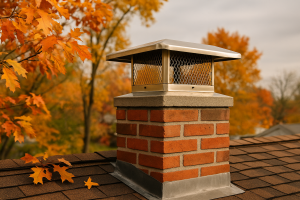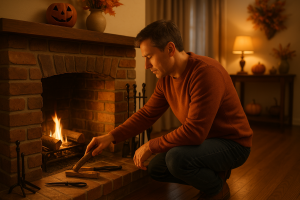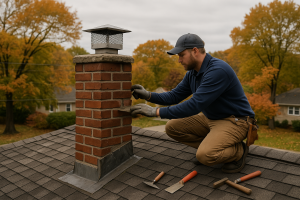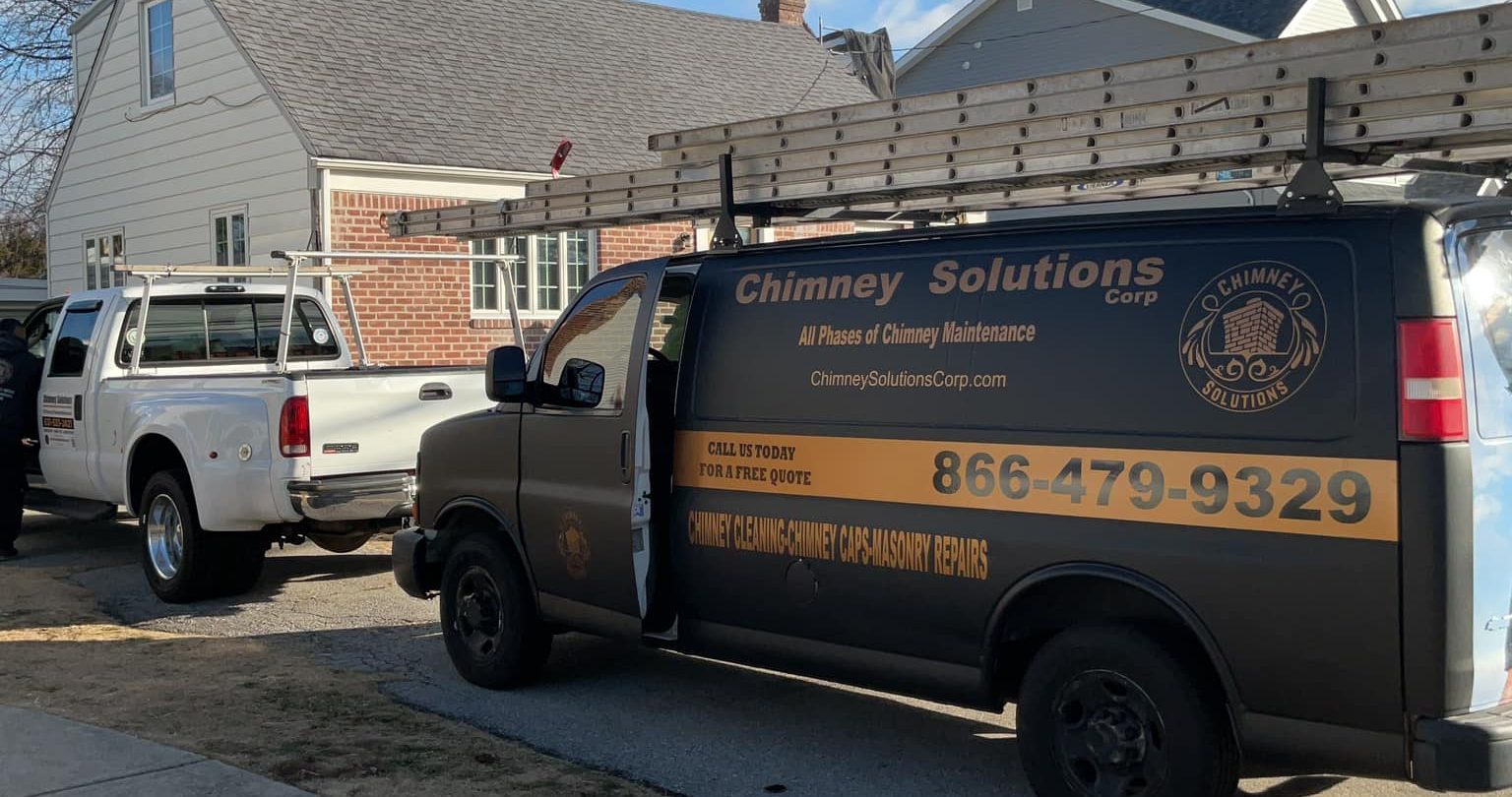Chimney fires are a serious risk to homeowners, causing extensive property damage each year. Dirty chimneys with a buildup of creosote are the leading cause of these fires, but they are entirely preventable with proper chimney maintenance. A neglected chimney can ignite due to unburned wood particles, excessive soot, or flammable materials trapped inside the chimney structure.
Understanding the causes of chimney fires and how to safeguard your home is essential for any chimney owner. This guide will break down the most common reasons behind chimney fire conditions and provide chimney fire prevention tips to keep your home and family safe.
The Most Common Causes of Chimney Fires
1. Creosote Buildup: The Leading Cause of Chimney Fires
Creosote forms as a natural byproduct of burning wood. It is a brown substance that builds up on chimney walls when wood-fuel fires burn at insufficient temperatures or with restricted air supply.
- Types of Creosote:
- Stage 1: A flaky, soot-like deposit that is easy to remove.
- Stage 2: A brown residue that hardens into tar-like deposits.
- Stage 3: Glazed creosote, the most dangerous and difficult to remove, requiring special equipment for cleaning.
- Warning Signs of Excess Creosote:
- A hot smell or burning of soot
- Loud cracking or rumbling sounds similar to a freight train
- Thick dense smoke exiting the chimney crown
- Black, tar-like chemical byproduct inside the firebox with wood
🔥 Prevention Tip:
Schedule a professional chimney sweep or a CSIA-certified chimney inspection annually. Professional cleanings eliminate dangerous flue gases, toxic fumes, and combustion gases from chimney operations.
2. Burning Unseasoned or Wet Wood
The moisture content of firewood plays a crucial role in preventing chimney fires. Burning wet or unseasoned wood leads to excessive water vapor, which cools down flue temperatures and creates an environment where creosote forms more rapidly.
- Types of Wood to Avoid:
- Green wood (freshly cut wood with high moisture content)
- Evergreen woods (high in sap and combustible materials)
- Dense woods that burn inefficiently
- Best Practices:
- Use seasoned firewood, dried for at least 6-12 months.
- Check with moisture meters to ensure the moisture content is below 20%.
🔥 Prevention Tip:
Burn dry firewood and store it in a well-ventilated area to prevent creosote residue buildup.
3. Chimney Blockages from Debris or Animal Nests
A chimney obstruction can restrict adequate airflow, trapping dangerous gases and allowing products of combustion to linger inside the smoke chamber.
Common Causes of Blockages:
- Animal nesting materials (birds, squirrels, raccoons)
- Debris from nature, including leaves, twigs, and soot
- Collapsed chimney liner due to excessive heat or chimney fire damage
🔥 Prevention Tip:
- Install a chimney cap to block debris buildup and animals.
- Have a chimney inspector check for evidence of smoke escaping or chimney leaks.
4. Cracked or Damaged Chimney Liners
A damaged chimney liner allows intense heat and dangerous flue gases to penetrate the exterior masonry, igniting combustible wood frames in nearby adjacent home materials.
- Common signs of damage:
- Cracks in the ceramic tile liner or factory-built metal chimney
- Restricted airflow due to structural issues
- Excessive soot on the smoke shelf or chimney damper
🔥 Prevention Tip:
Hire a qualified chimney professional for chimney relining services if your masonry chimney or chimney structure is compromised.
5. Overloading the Fireplace with Too Much Wood
Adding excessive amounts of wood into the fireplace fires raises internal flue temperatures beyond 600-1000 degrees, increasing the risk of slow-burning chimney fires.
- Safe Burning Practices:
- Burn small, controlled fires using the right types of wood.
- Ensure sufficient quantities of oxygen for complete combustion.
- Avoid coal-burning wood stoves, which produce higher levels of combustion gases.
🔥 Prevention Tip:
Use an efficient wood stove or efficient gas fireplace insert for safer, cleaner burning.
How to Prevent Chimney Fires
Follow these chimney fire safety best practices to prevent chimney fire damage and protect your home:
✅ Schedule a Professional Chimney Cleaning Service Annually
- A chimney cleaning service removes excess creosote, soot, and flammable material.
✅ Install a Chimney Cap & Monitor Airflow
- Keeps debris buildup and animal nesting materials out.
- Ensures proper airflow in mind for chimney operations.
✅ Invest in Chimney Relining Services
- A chimney engineer can reinforce your chimney structure with a new liner.
✅ Keep a Metal Container for Ash Disposal
- Always store ashes in a metal container with a container with water for safety.
Are Chimney Fires Covered by Homeowners Insurance?
Many homeowners insurance policies cover chimney fire damage, but claims can be denied if chimney maintenance was neglected.
- Applicable insurance policy factors:
- Level 1 vs. deeper level cleaning records
- Experience in chimney care from a chimney service technician
- Whether the culprit of chimney fires was due to a lack of annual inspections
🔥 Prevention Tip:
Ensure annual chimney cleaning records from an America-certified chimney sweep to lower costly home insurance claims.
Conclusion
Chimney fires are preventable with proper chimney maintenance, including chimney sweepings, chimney repairs, and annual chimney inspections. By burning seasoned wood, ensuring clean chimneys, and hiring a chimney professional, homeowners can avoid costly property damage.
For expert chimney services, trust Chimney Solutions Corp—your choice for chimney inspections with decades of experience in chimney safety. Schedule a CSIA-certified chimney inspection today!



